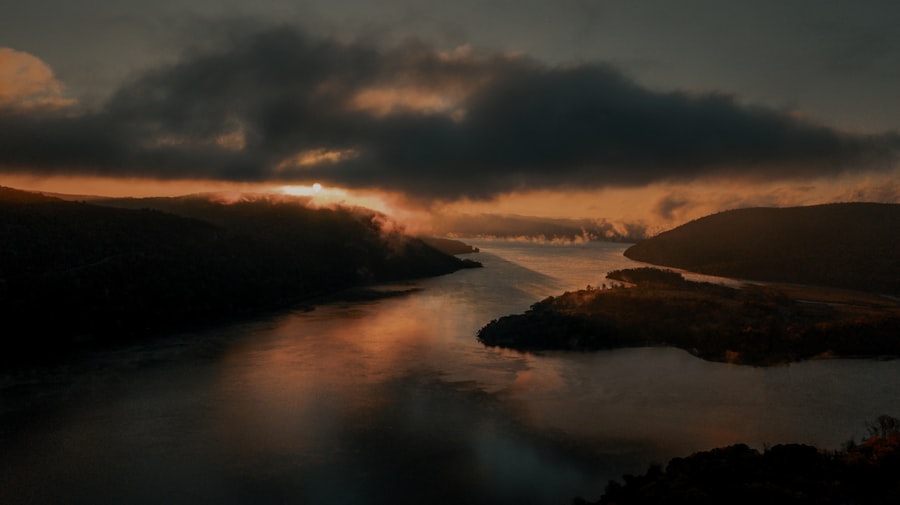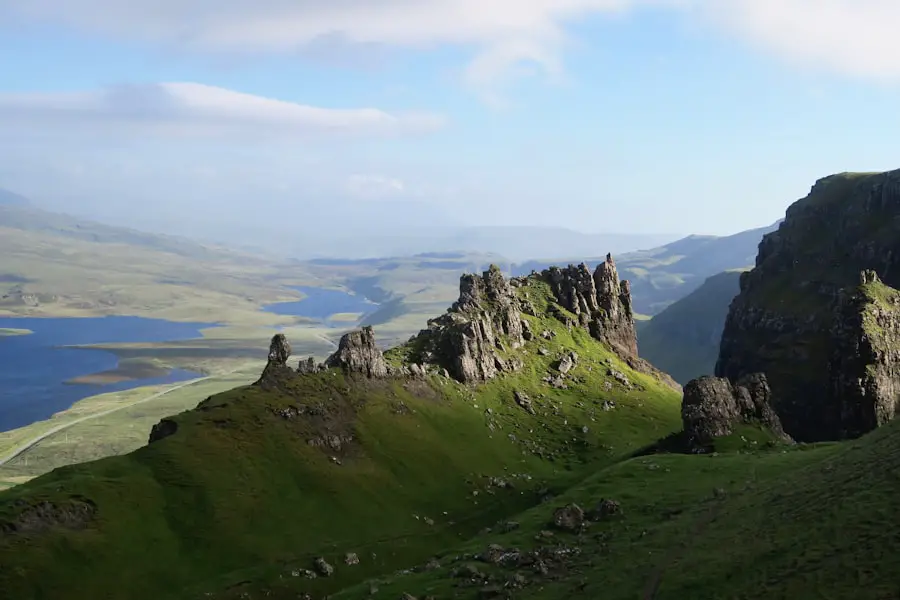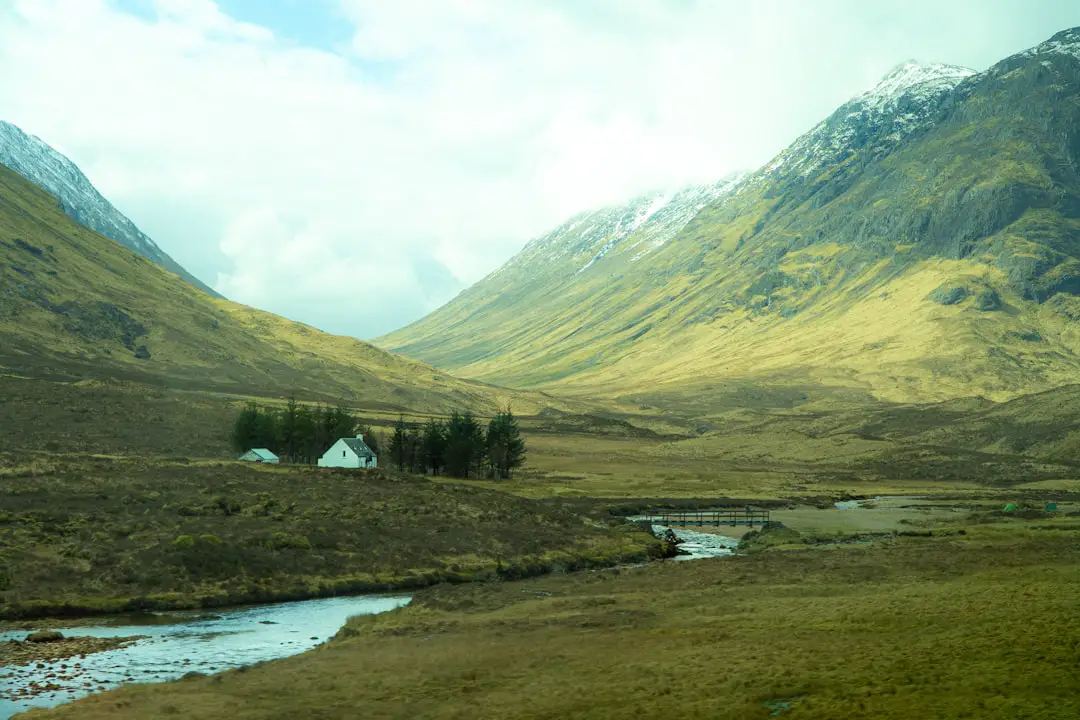As winter recedes, Scotland awakens in a vibrant display of life and color during the spring months. From March to May, the landscape transforms as flowers bloom and trees regain their lush foliage. The iconic daffodils, which are often associated with the arrival of spring, blanket the countryside in bright yellow hues, particularly in places like the Royal Botanic Garden in Edinburgh.
This period is marked by a sense of renewal, as the days grow longer and warmer, inviting both locals and visitors to explore the natural beauty that Scotland has to offer. In addition to the floral displays, spring is also a time for wildlife activity. Birds return from their migrations, filling the air with their songs, while animals such as deer and rabbits become more visible as they emerge from their winter hiding spots.
The Scottish Highlands, with their breathtaking landscapes, provide an ideal backdrop for nature enthusiasts eager to witness this seasonal transformation. Hiking trails become more accessible, and the crisp air invigorates those who venture into the great outdoors. The combination of blooming flora and active fauna creates a picturesque setting that captures the essence of spring in Scotland.
Key Takeaways
- Spring in Scotland brings blooming beauty with colorful flowers and lush green landscapes.
- Summer is the peak time for festivals and outdoor activities, offering a lively and vibrant atmosphere.
- Autumn in the highlands is a symphony of colors, with the landscape transforming into a stunning display of reds, oranges, and yellows.
- Winter in Scotland is all about embracing the cozy charm, with opportunities for winter sports and enjoying the festive atmosphere.
- Visiting Scotland in the off-season allows for exploring with fewer crowds, making it a more peaceful and intimate experience.
Summer: The Peak of Festivals and Outdoor Activities
Summer in Scotland, spanning from June to August, is characterized by an explosion of cultural events and outdoor activities. This season is often regarded as the peak time for festivals, with events like the Edinburgh Festival Fringe drawing performers and audiences from around the globe. The city transforms into a vibrant hub of creativity, showcasing everything from theater and comedy to music and dance.
The atmosphere is electric, with street performers entertaining crowds and venues bustling with activity. Visitors can immerse themselves in a diverse array of performances, making it a unique opportunity to experience Scotland’s rich artistic heritage. Beyond the festivals, summer offers an abundance of outdoor activities that take advantage of Scotland’s stunning landscapes.
The long daylight hours provide ample time for hiking, cycling, and exploring the rugged coastlines. The Isle of Skye, known for its dramatic cliffs and picturesque villages, becomes a popular destination for those seeking adventure. Kayaking in the lochs or sailing around the islands allows visitors to appreciate Scotland’s natural beauty from a different perspective.
Additionally, summer is an ideal time for wildlife watching; seals can often be spotted basking on rocky shores, while puffins nest on coastal cliffs, providing excellent opportunities for photography and observation.
Autumn: A Symphony of Colors in the Highlands

As summer fades into autumn, Scotland undergoes a remarkable transformation that captivates the senses. From September to November, the Highlands are painted in a rich tapestry of colors—golden yellows, fiery reds, and deep oranges dominate the landscape. This seasonal change is particularly striking in areas like Glencoe and Cairngorms National Park, where the foliage creates a breathtaking backdrop for outdoor activities.
Hiking during this time allows visitors to experience the crisp air and stunning vistas while surrounded by nature’s vibrant palette. Autumn also brings with it a sense of tranquility as the summer crowds dissipate. This quieter time of year offers a unique opportunity to explore Scotland’s historic sites and natural wonders without the hustle and bustle of peak tourist season.
Castles such as Eilean Donan and Stirling Castle are less crowded, allowing for a more intimate experience. Additionally, autumn is harvest season in Scotland, making it an excellent time to indulge in local produce at farmers’ markets or enjoy seasonal dishes at traditional pubs. The combination of stunning scenery and culinary delights makes autumn a truly enchanting time to visit.
Winter: Embracing the Cozy Charm of Scotland
| Activity | Location | Cost |
|---|---|---|
| Skiing | Cairngorms National Park | Varies |
| Whisky Tasting | Speyside Distilleries | £10-£20 per person |
| Winter Hiking | Glencoe Valley | Free |
| Cozy Pub Visits | Edinburgh | Varies |
Winter in Scotland, from December to February, brings a unique charm that is often overlooked by travelers seeking warmer climates. The landscape is transformed into a winter wonderland, with snow-capped mountains and frost-kissed trees creating a serene atmosphere. Cities like Edinburgh and Glasgow embrace the festive spirit with Christmas markets, twinkling lights, and seasonal events that draw both locals and tourists alike.
The warmth of traditional Scottish hospitality can be felt in cozy pubs where visitors can enjoy hearty meals and warming drinks by a crackling fire. For those who enjoy winter sports, Scotland offers excellent opportunities for skiing and snowboarding in areas such as Aviemore and Glencoe. The ski resorts provide a range of slopes suitable for all skill levels, making it an appealing destination for both beginners and seasoned enthusiasts.
Beyond skiing, winter is also an ideal time for wildlife watching; red deer can be seen roaming the hillsides against a backdrop of snow, while birds of prey soar through the crisp winter skies. Embracing the cozy charm of Scotland during this season allows visitors to experience a different side of the country that is rich in culture and natural beauty.
Off-Season: Exploring Scotland with Fewer Crowds
Traveling to Scotland during the off-season—typically late autumn through early spring—offers a unique experience characterized by fewer crowds and lower prices. This period allows visitors to explore popular attractions at a leisurely pace without the hustle and bustle that often accompanies peak tourist times. Historic sites such as Urquhart Castle on Loch Ness or the ancient ruins of Skara Brae in Orkney can be enjoyed in relative solitude, providing an opportunity for reflection and appreciation of their historical significance.
Moreover, visiting during the off-season allows travelers to engage more deeply with local culture. Many towns host smaller-scale events or festivals that showcase traditional music, crafts, and cuisine. For instance, the Scottish Winter Festivals celebrate local customs with events like ceilidh dances and food fairs that highlight seasonal produce.
Engaging with locals during these events fosters a sense of community and connection that can be harder to achieve during busier times. The off-season also presents opportunities for unique experiences such as guided tours focused on Scottish folklore or ghost stories that delve into the country’s rich history.
Weather Considerations: Planning for Rain and Sun

Scotland’s weather is famously unpredictable, with rain possible at any time of year. Therefore, planning for varying weather conditions is essential for anyone looking to explore this beautiful country. Spring may bring mild temperatures but can also surprise visitors with sudden showers; packing layers is crucial to adapt to changing conditions throughout the day.
Waterproof jackets and sturdy footwear are recommended for outdoor activities, ensuring comfort while hiking or exploring coastal paths. Summer typically offers warmer weather but can still be accompanied by rain showers. Visitors should not be deterred by forecasts; instead, they should embrace the opportunity to experience Scotland’s lush landscapes that thrive on rainfall.
Autumn brings cooler temperatures along with stunning foliage; however, it is wise to prepare for wet conditions as well. Winter weather can vary significantly depending on location; while lowland areas may experience milder temperatures, highland regions can see significant snowfall. Understanding these seasonal variations allows travelers to plan their itineraries effectively while ensuring they are prepared for whatever weather may come their way.
Events and Festivals: Timing Your Visit for Cultural Experiences
Scotland’s calendar is filled with events and festivals that celebrate its rich cultural heritage throughout the year. Timing your visit to coincide with these festivities can enhance your experience significantly. For instance, attending the Edinburgh International Festival in August provides an unparalleled opportunity to immerse yourself in world-class performances across various art forms.
The festival atmosphere permeates the city, creating an exciting backdrop for exploration. In addition to major festivals like those in Edinburgh, smaller regional events also offer unique insights into local traditions. The Highland Games held throughout summer months showcase traditional Scottish sports such as caber tossing and tug-of-war while celebrating Scottish music and dance.
These events foster community spirit and provide visitors with an authentic taste of Scottish culture. By planning your visit around these festivals, you can engage with locals and gain a deeper appreciation for Scotland’s diverse cultural landscape.
Wildlife Watching: The Best Seasons for Spotting Scotland’s Creatures
Scotland is home to an array of wildlife that varies throughout the seasons, making it essential for nature enthusiasts to choose their timing wisely when planning wildlife watching excursions. Spring is an excellent time for birdwatching as migratory species return to nest; locations like Loch Lomond are ideal for spotting swans and various songbirds during this vibrant season. Additionally, spring marks the calving season for many mammals; visitors may have the chance to see young deer frolicking in the fields or seals giving birth along coastal shores.
Summer offers opportunities to observe marine life along Scotland’s coasts; boat trips around islands such as Mull provide chances to see dolphins, porpoises, and even basking sharks in their natural habitats. Autumn brings its own unique wildlife experiences; red deer stags can be seen during their rutting season in places like Glen Etive or Glenfeshie, where their impressive antlers are on full display as they compete for mates. Winter wildlife watching can be equally rewarding; while many animals hibernate or migrate south, species like golden eagles remain active against snow-covered backdrops, offering breathtaking views for those willing to brave the cold.
Each season presents distinct opportunities for wildlife enthusiasts to connect with Scotland’s diverse ecosystems.
If you are planning a trip to Scotland, you may be wondering when the best time to visit is. According to a recent article on TakeTravelInfo, the best time to travel to Scotland is during the summer months of June to August when the weather is mild and the days are long. This is the perfect time to explore the stunning landscapes, historic castles, and vibrant cities that Scotland has to offer.
FAQs
What is the best time to travel to Scotland?
The best time to travel to Scotland is during the summer months, from June to August, when the weather is relatively mild and the days are long.
What is the weather like in Scotland during the summer?
During the summer months, Scotland experiences mild temperatures, with average highs ranging from 15°C to 20°C. However, it is important to note that the weather in Scotland can be unpredictable, so it is advisable to pack layers and be prepared for rain.
Are there any specific events or festivals to consider when planning a trip to Scotland?
Yes, Scotland hosts a variety of events and festivals throughout the year, including the Edinburgh Festival Fringe in August, the Royal Edinburgh Military Tattoo, and the Highland Games. These events can add a unique cultural experience to your trip.
What are the advantages of traveling to Scotland during the off-peak season?
Traveling to Scotland during the off-peak season, such as spring or autumn, can offer lower prices for accommodations and fewer crowds at popular tourist attractions. Additionally, the landscapes are often stunning during these times of the year.
What are the disadvantages of traveling to Scotland during the off-peak season?
The weather during the off-peak season can be more unpredictable, with a higher chance of rain and cooler temperatures. Some tourist attractions and accommodations may also have reduced hours or be closed during the off-peak season.

2 thoughts on “Best Time to Travel to Scotland: A Seasonal Guide”